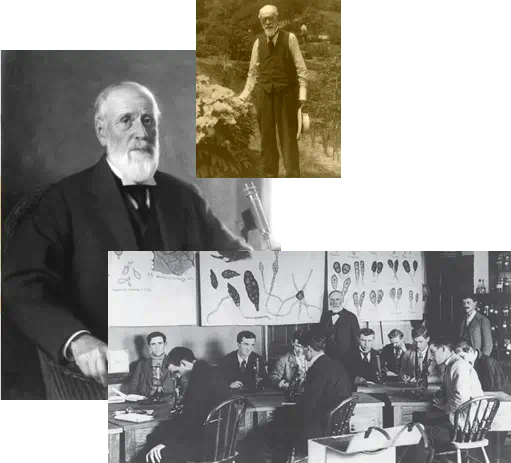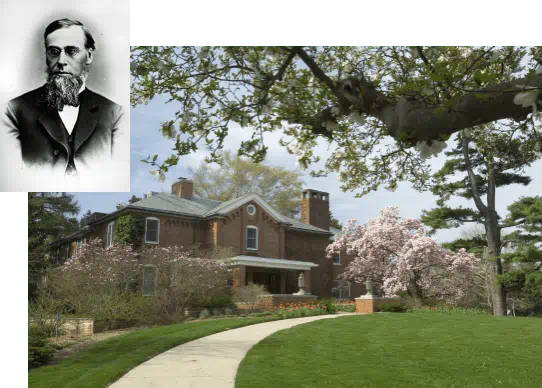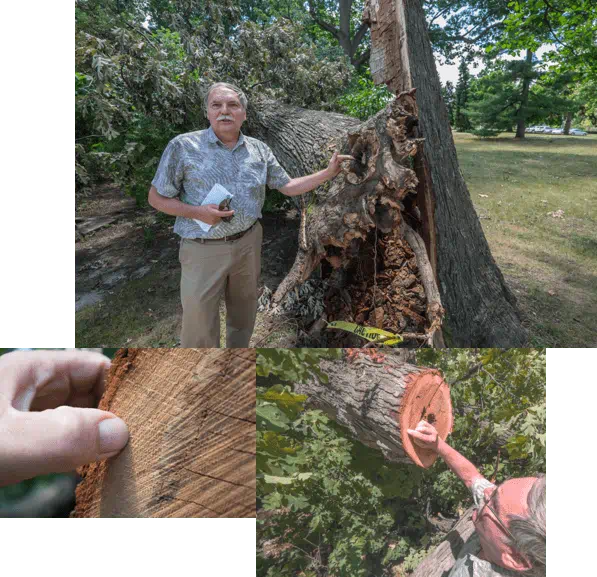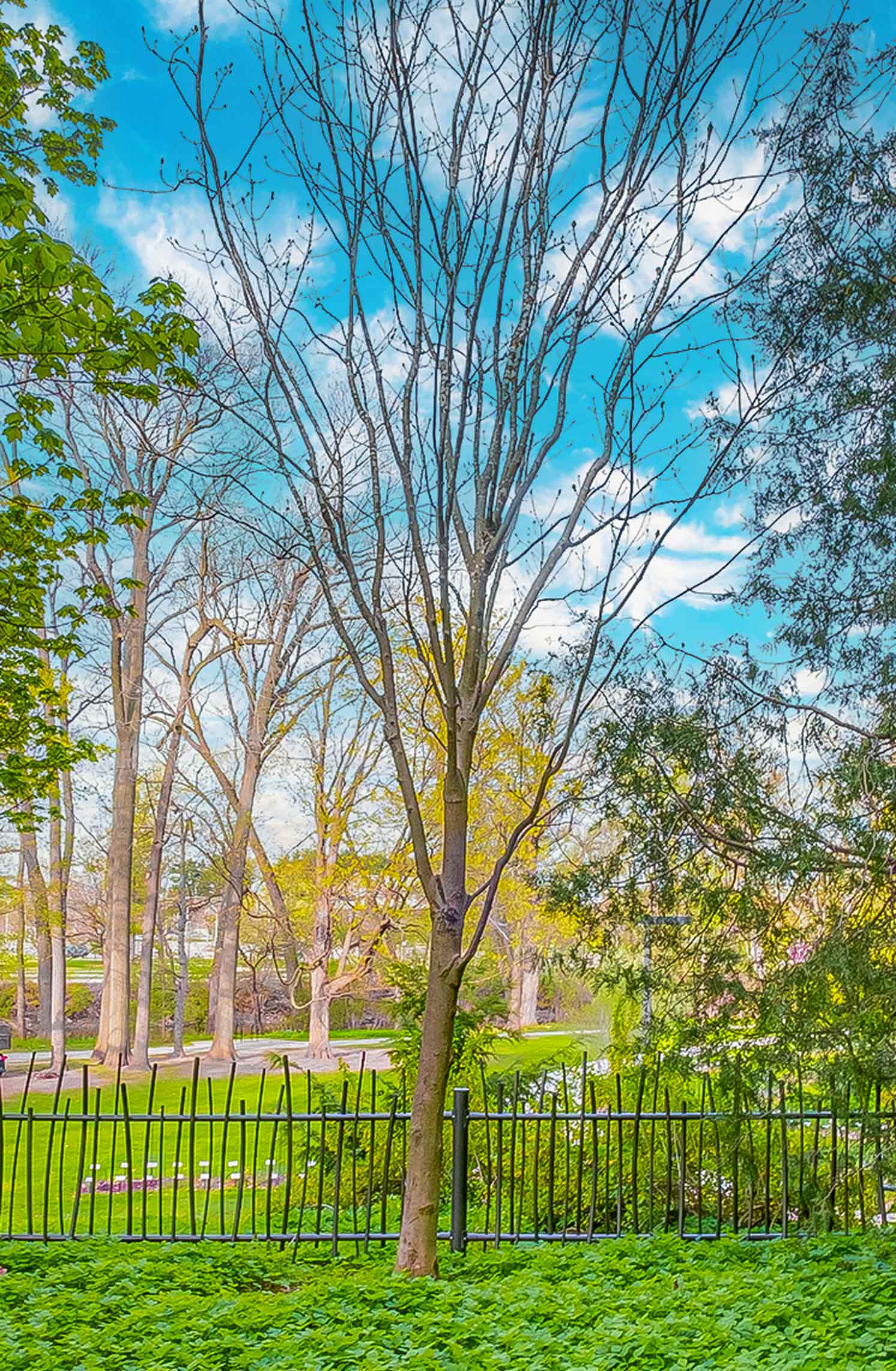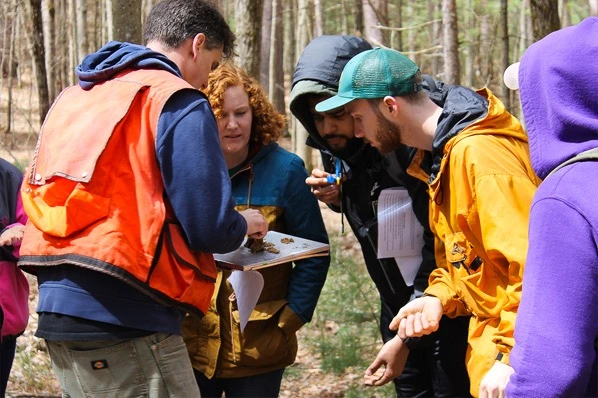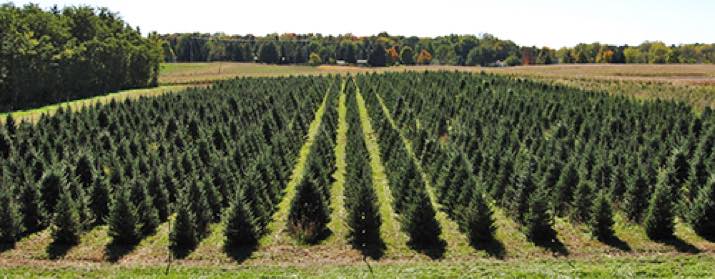
A tree research powerhouse
MSU’s forestry program was established in 1902 and is one of the oldest forestry programs in the country. Decades later, in 1963, MSU’s Tree Research Center got its start.
“For over 100 years, MSU has had a long tree nursery heritage,” says Randy Klevickas, farm manager at the Tree Research Center. “The TRC serves the citizens of Michigan by addressing state forestry issues and planning for future global forestry challenges.”
Each year, the TRC grows more than 20,000 trees in its combined nursery and greenhouse system. These seedlings support research in tree genetics, physiology (what is happening inside the tree’s cells), silviculture (tending to trees like a gardener would tend to flowers) and ecology. While the TRC is known for growing Christmas trees, the aim of the center’s researchers is to develop and identify trees that grow faster and resist disease to help forests throughout the state.
The trees that are planted on campus come from the Beaumont nursery located on Beaumont Road, southeast of the MSU Pavilion. Once a seedling is planted on campus, it becomes the responsibility of Jerry Wahl, MSU’s campus arborist.
“Trees are a priority at MSU, and it shows,” says Wahl. “We planted over 300 trees on campus in 2020 and are on track to plant 300 trees on campus this year.”
Trees planted on campus become part of MSU’s history and are entered into the Campus Tree Map. Telewski created the program in the 1990s as an ongoing effort to map and track trees on campus. By clicking on a green dot on the map, information is displayed about the kind of tree it is, the genus and species name of the tree and, sometimes, the date it was planted. Wahl and his team use the information on this map daily and update an entry if a tree is removed from campus. In 2020, MSU adopted a policy in which any tree that is cut down or moved from campus must be replaced on a one-for-one basis.
“We try to plant trees that will grow and thrive in Michigan,” says Telewski. “We want to increase our tree diversity and look for new species from around the world.”
Wahl is also in charge of keeping the trees on campus healthy. In the past, treating almost 200 mature elm trees for Dutch elm disease meant spraying them with insecticides.
“Innovations over the last 20 years mean that now, trees receive an injection that protects them for two years,” says Wahl. “It’s better for the trees and safer for the environment.”
Sometimes trees die or need to be cut down. Any trees removed from campus are repurposed into mulch or recycled by the MSU Shadows Collection program. This program uses the wood to make commemorative and everyday items such as diploma frames, cheese boards and even desks, which are sold to raise money to plant more trees on campus. Another advantage of making new products out of the wood ensures the carbon will stay sequestered instead of getting released back into the atmosphere from burning. Recently, trees removed from campus have been repurposed into log benches for outdoor seating areas on campus.
All of the care and attention that MSU puts into its trees has been recognized by the Arbor Day Foundation, which honored MSU with 2020 Tree Campus Higher Education recognition for its commitment to managing the urban forests throughout the university’s campus.
“This shows how much MSU cares for its trees,” says Wahl. “We are committed to planting trees, maintaining and making trees a priority.”
Another part of taking care of the trees on campus means protecting them during any campus construction or severe storm.
“A tree had blown down in a storm, and I noticed a metal cap on the tree,” Telewski says. “I knew from Beal’s notes that in 1858, some trees were given a metal cap to cover the wound where the tree had been topped. Trees were topped to encourage the tree crowns to grow wider. This was one of the original trees on campus.”
Telewski asked retired campus arborist Paul Swartz to cut a solid cross-section of the tree, called a cookie, to determine the tree’s age.
“I counted 347 rings on that tree,” Telewski says, “We had to find a way to save the tree and we did. Fortunately, when the Resilient Oak, as the tree is now called, split when it blew over, there was a small portion of the tree with a single branch attached left standing.”
